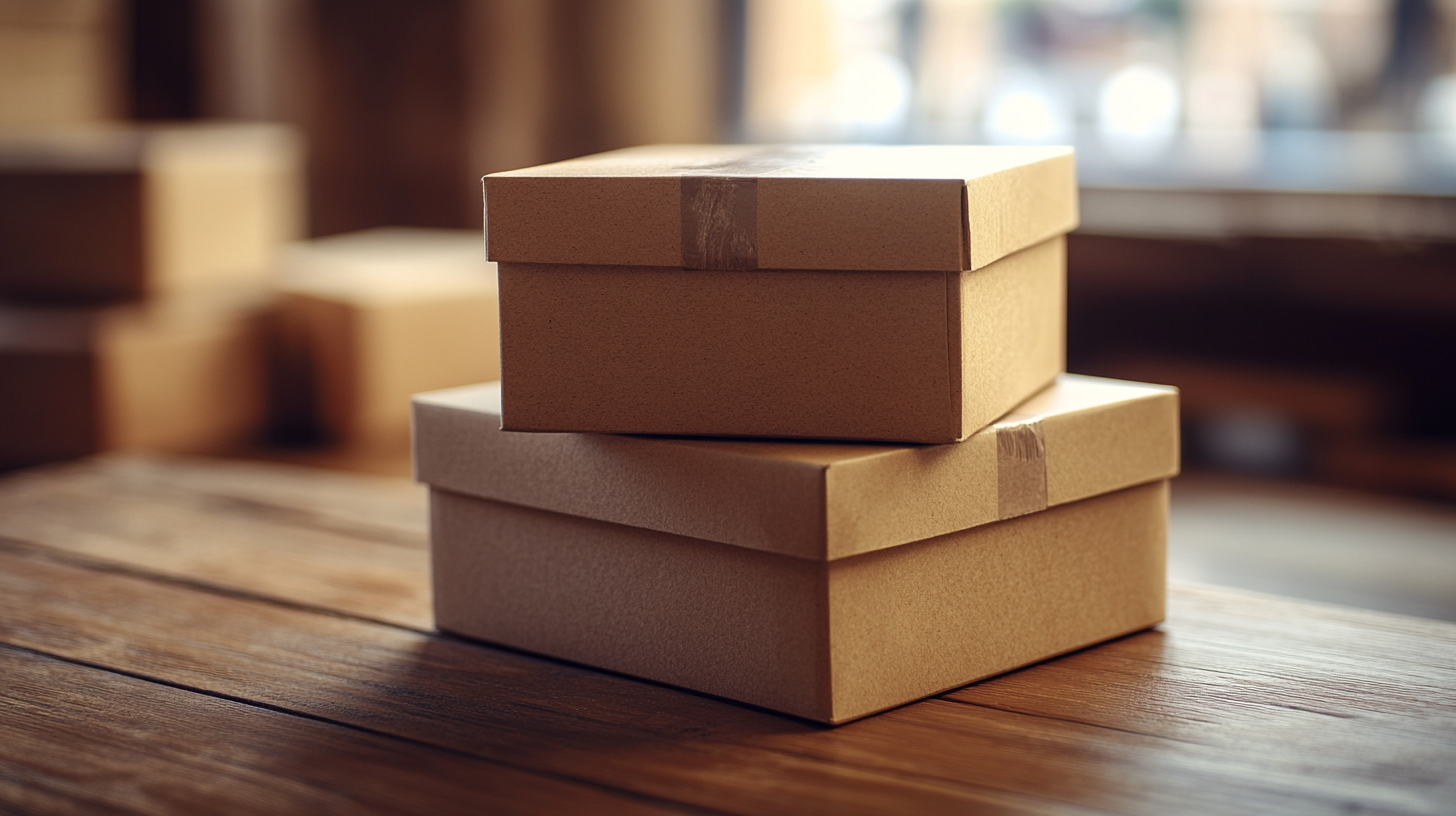ProMach is your partner from start to finish. Our product brands are grouped into distinct business lines that make the most sense to our customers, covering every function of the production line: Filling, Bottling & Capping, Decorative Labeling, Flexibles & Trays, Pharma, Handling & Sterilizing, Labeling & Coding, Robotics & End of Line, and Systems & Integration.
learn moreInnovative Packaging Options for Global Supply Chain Solutions and How to Choose the Best Fit
In today's rapidly evolving global marketplace, the importance of effective supply chain solutions cannot be overstated. As companies strive to deliver products efficiently while minimizing costs, innovative packaging options have emerged as a crucial factor in enhancing operational efficiency and sustainability. By choosing the right packaging options, businesses can not only protect their products during transit but also improve their overall logistics strategy, reduce waste, and meet consumer demand for environmentally friendly practices.
However, with a plethora of packaging solutions available on the market, the challenge lies in selecting the best fit tailored to specific needs. Companies must consider various factors, including material durability, cost-effectiveness, and environmental impact when deciding on packaging options. This blog aims to explore the innovative packaging options that are shaping the future of global supply chain solutions and provide insights on how to make informed decisions to optimize packaging strategies for any business.

Emerging Trends in Packaging for Global Logistics Efficiency
Emerging trends in packaging are reshaping global logistics efficiency, particularly in the realm of e-commerce. As the demand for quick and reliable shipping grows, innovative packaging solutions have become indispensable for maintaining a seamless supply chain. The automated e-commerce packaging market is playing a vital role in this transformation, enabling businesses to enhance order fulfillment while reducing waste and costs. This shift not only optimizes logistics operations but also addresses the increasing expectations of consumers for timely deliveries. Sustainability is another critical trend influencing packaging solutions in logistics. Companies are actively seeking eco-friendly materials and designs to minimize their environmental impact. The pharmaceutical sector, for instance, has witnessed significant advancements in cold chain logistics, with insulated shipper solutions leading the way in temperature-controlled packaging. As these innovations gain traction, they not only improve product integrity during transit but also align with a growing consumer demand for sustainable practices. Moreover, the packaging industry is beginning to integrate artificial intelligence to further enhance operational efficiency. AI-driven analytics can streamline inventory management, improve the customization of packaging, and predict demand trends, ensuring that companies can adapt swiftly to market changes. As logistics continue to evolve, harnessing these emerging trends will be essential for businesses looking to thrive in the competitive landscape of global supply chain management.

Sustainable Packaging Solutions for Eco-Friendly Supply Chains
Sustainable packaging solutions have become an integral part of modern eco-friendly supply chains, with many companies now prioritizing packaging that minimizes environmental impact. The recent forecast that the returnable transport packaging market will reach USD 50.17 billion by 2035 underscores the growing demand for sustainable options in logistics. This shift is not merely a trend; it represents a fundamental change in how companies approach packaging.
Returnable transport packaging (RTP) offers numerous advantages, particularly in promoting sustainability. By utilizing containers that can be reused multiple times, companies significantly reduce waste and lower their carbon footprints. Consequently, these solutions not only foster an eco-friendly image but also enhance operational efficiency. The long-term cost savings realized through reduced packaging waste and lower disposal expenses contribute to a compelling case for investing in RTP systems.
Choosing the right sustainable packaging solution involves assessing various factors including the type of products being transported, the distance of transport, and the specific needs of the supply chain. Companies should aim for a holistic approach that integrates packaging solutions designed for multiple trips, optimizing both performance and environmental responsibility. Ultimately, sustainable packaging is not just about compliance with environmental regulations; it is a strategic business decision that aligns economic viability with ecological stewardship.

Evaluating Packaging Materials: Durability vs. Cost-effectiveness
In the ever-evolving landscape of the packaging industry, selecting the right materials is a crucial factor that influences both durability and cost-effectiveness. As businesses expand across borders, the need for innovative packaging solutions becomes paramount, particularly in the context of global supply chain optimization. Various types of packaging materials like solvent-based, water-based, and sustainable options frequently come into play, each catering to specific market demands. For instance, while solvent-based inks might offer superior durability, water-based options are increasingly favored for their eco-friendliness, appealing to a market that is steadily trending towards sustainability.
The shift towards flexible packaging further encapsulates this dual focus. In the United Kingdom, the flexible packaging market is expected to experience robust growth, bolstered by an increased emphasis on efficient supply chain management and environmentally sustainable practices. As companies assess packaging materials, factors like print technology and end-use applications come into play, affecting not just cost but also brand perception. The ability to merge durability with affordability becomes a competitive edge, particularly as consumer awareness of environmental impacts grows.
With the global demand for packaging solutions projected to rise significantly—exemplified by the UK corrosion packaging market forecasted to reach $511 million by 2033—making strategic choices in packaging material is more critical than ever. Businesses must stay attuned to industry innovations and sustainability trends to effectively navigate their packaging needs and ensure their supply chains are both efficient and responsible.

Technological Innovations in Smart Packaging for Better Tracking
The rise of technological innovations in smart packaging has transformed the landscape of logistics and supply chain management. According to a report by MarketsandMarkets, the global smart packaging market is projected to reach USD 29.51 billion by 2025, growing at a CAGR of 12.1% from 2020. This growth reflects a mounting demand for packaging solutions that are not merely protective but also provide enhanced tracking capabilities.
Smart packaging technologies, such as RFID (Radio Frequency Identification) and IoT (Internet of Things) systems, are enabling real-time monitoring of products throughout their journey in the supply chain. A study published by ResearchAndMarkets indicates that RFID-based smart packaging can improve inventory management accuracy by up to 99%, significantly reducing loss and theft during transportation. These metrics highlight how smart packaging contributes not only to efficiency but also to substantial cost savings for businesses.
Moreover, companies are increasingly leveraging these technologies to enhance consumer engagement. For instance, smart labels equipped with QR codes allow consumers to access detailed product information instantly. This not only enriches the consumer experience but also provides manufacturers with valuable data on consumer behavior. In an era where traceability and transparency are paramount, adopting smart packaging solutions can offer businesses a competitive edge, ensuring compliance and enhancing brand loyalty in the global marketplace.
Choosing the Right Packaging Based on Product Type and Destination
In the dynamic landscape of global supply chains, selecting the right packaging is critical, especially when considering the product type and destination. A recent report on the alcoholic beverage packaging market reveals that its value reached $69.2 billion in 2024, driven by a growing demand for sustainable packaging solutions. This trend is notable as it reflects a shift towards eco-friendly materials, highlighting the importance of aligning packaging choices with consumer preferences and environmental considerations.
When choosing packaging, businesses must evaluate various factors based on their product types. For instance, flexible packaging, which includes materials like plastic and paper, is gaining popularity due to its lightweight nature and cost-effectiveness. The flexible packaging market is projected to expand as businesses look for innovative ways to reduce shipping costs while maximizing shelf life and product appeal. Moreover, understanding the specific needs of the target market can lead to better customer satisfaction and retention.
In addition, the destination plays a significant role in packaging decisions. Different regions may have specific regulations regarding packaging materials and waste management, necessitating a tailored approach to compliance. Companies that successfully navigate these complexities will not only enhance their operational efficiency but also position themselves as responsible players in the global market. Effective packaging strategies can ultimately drive brand loyalty and open new avenues for growth in the competitive e-commerce landscape.
